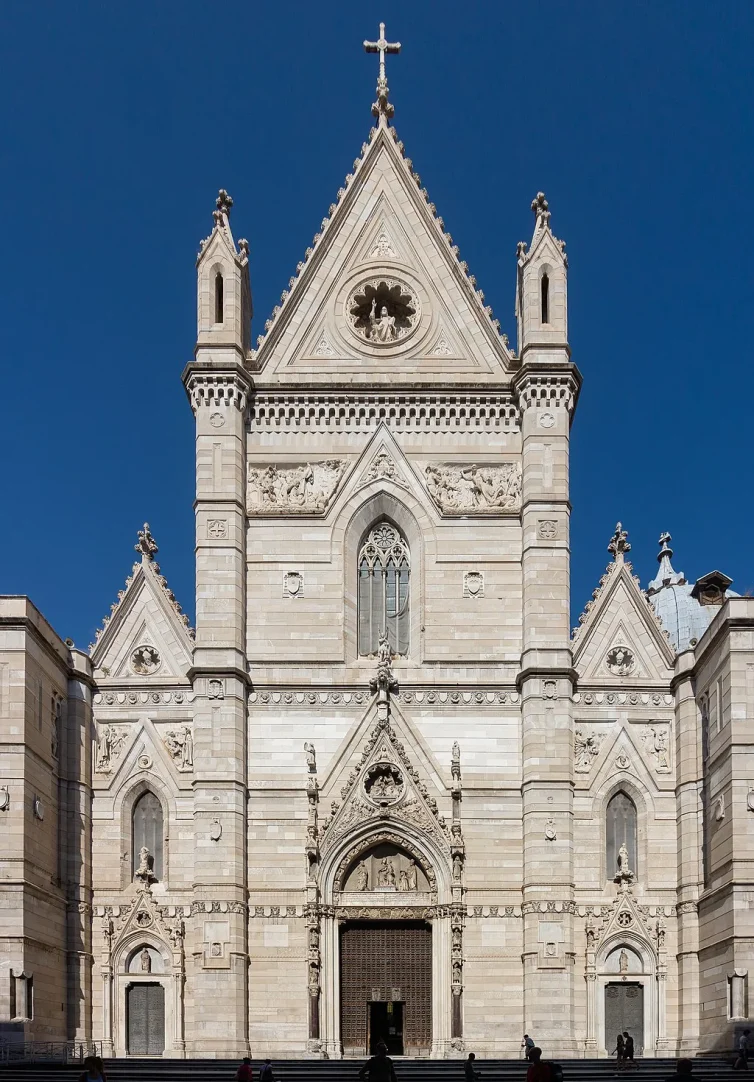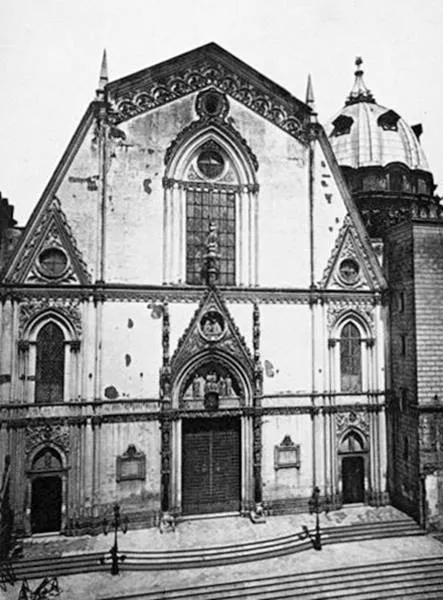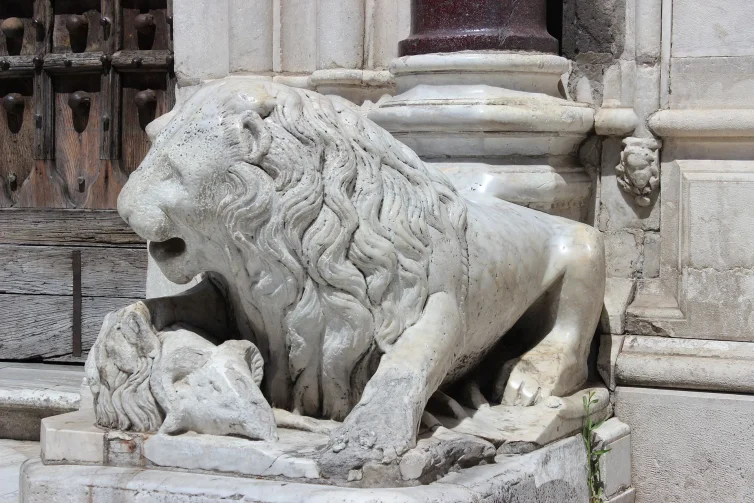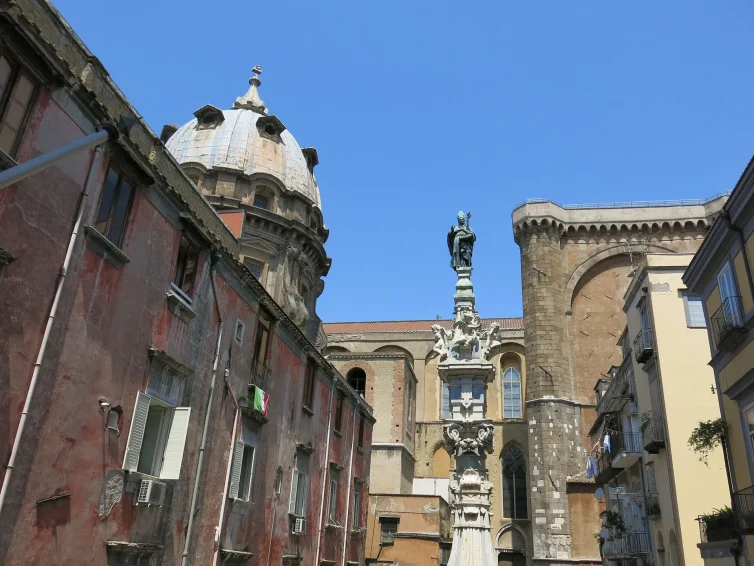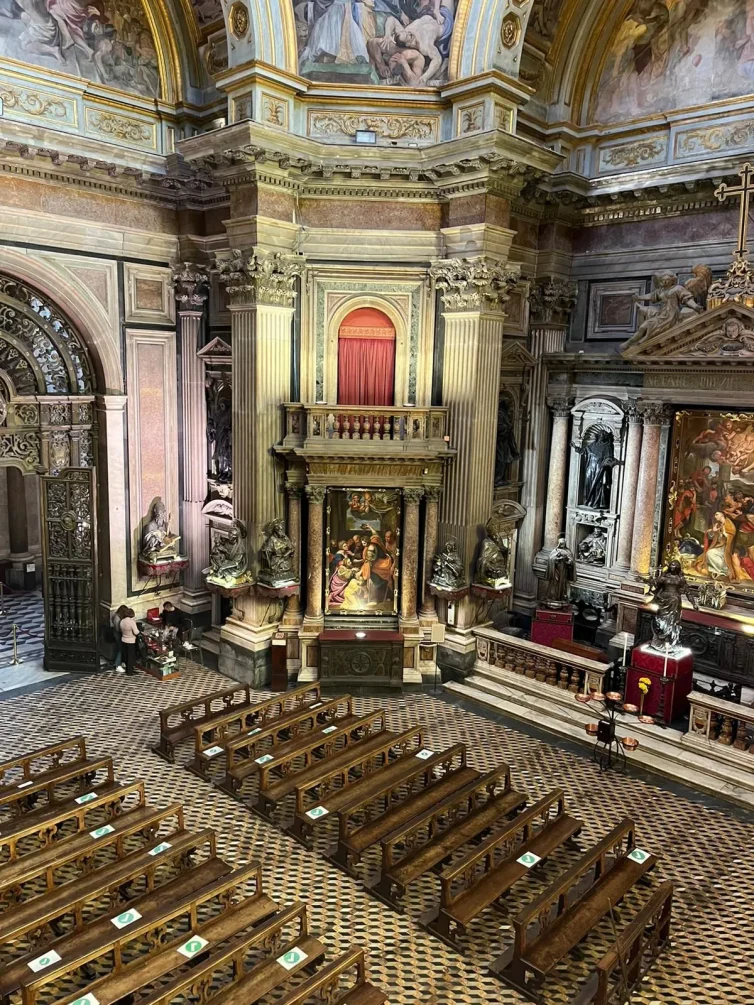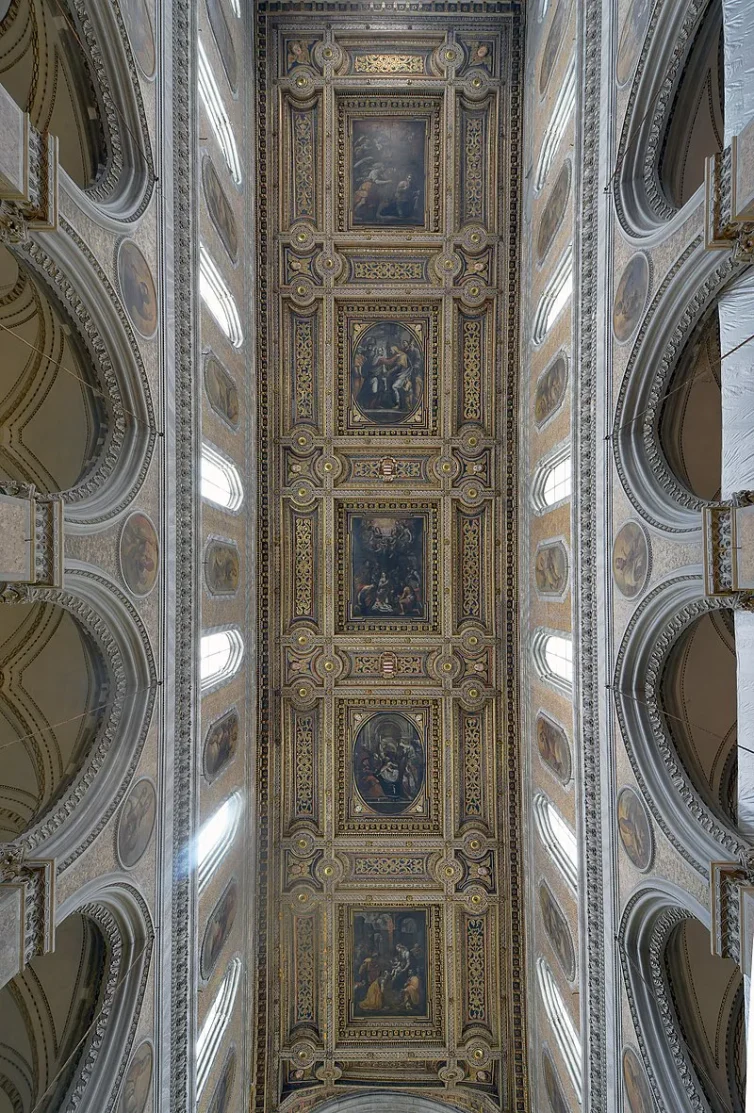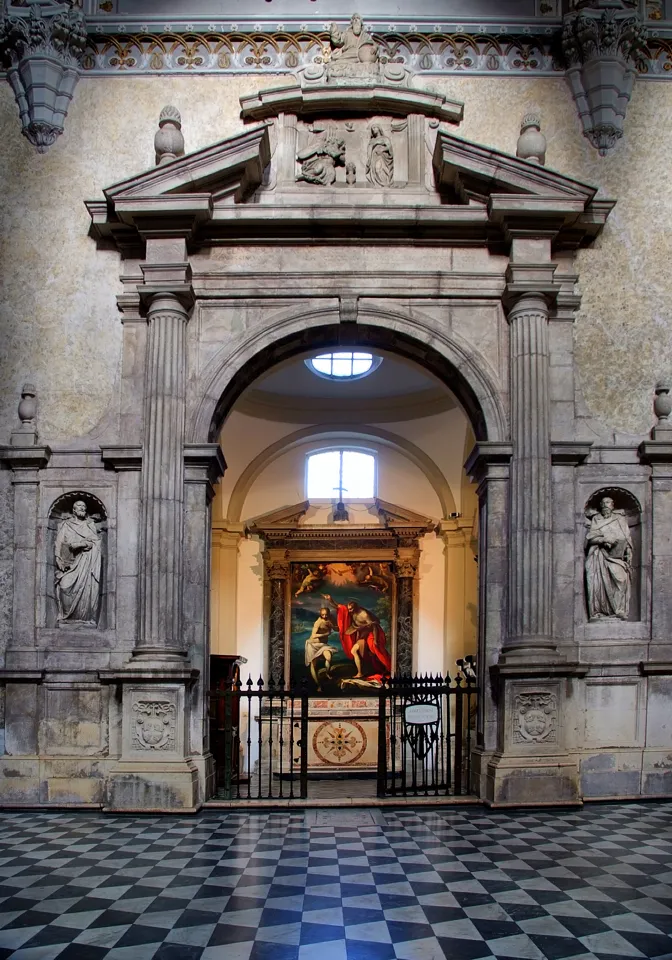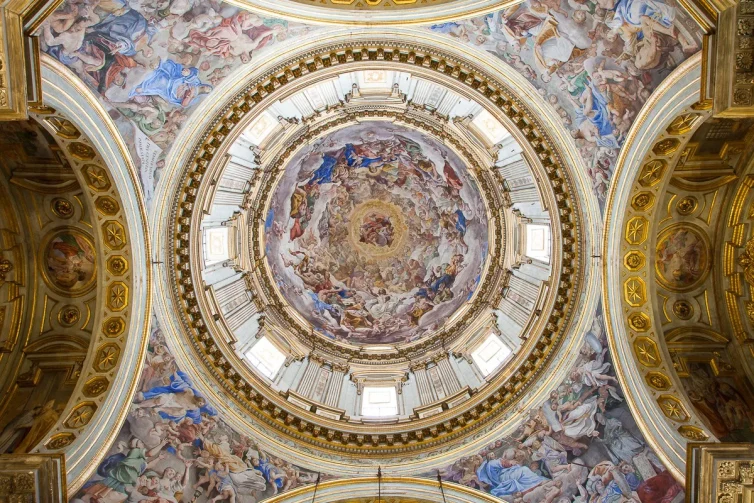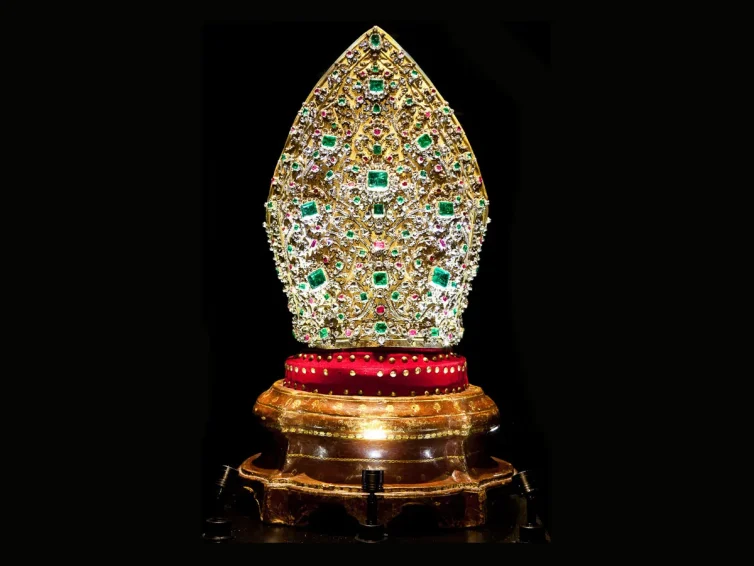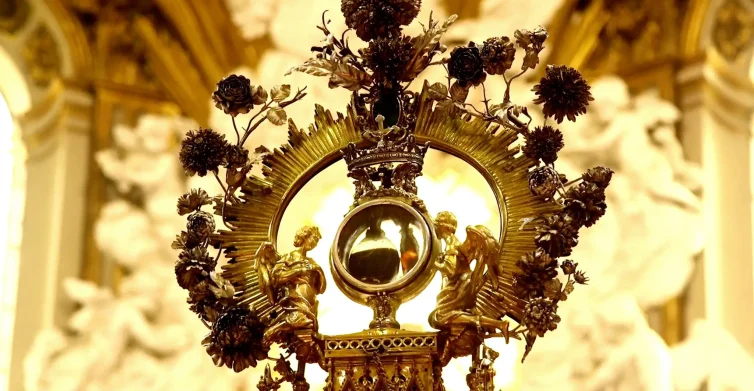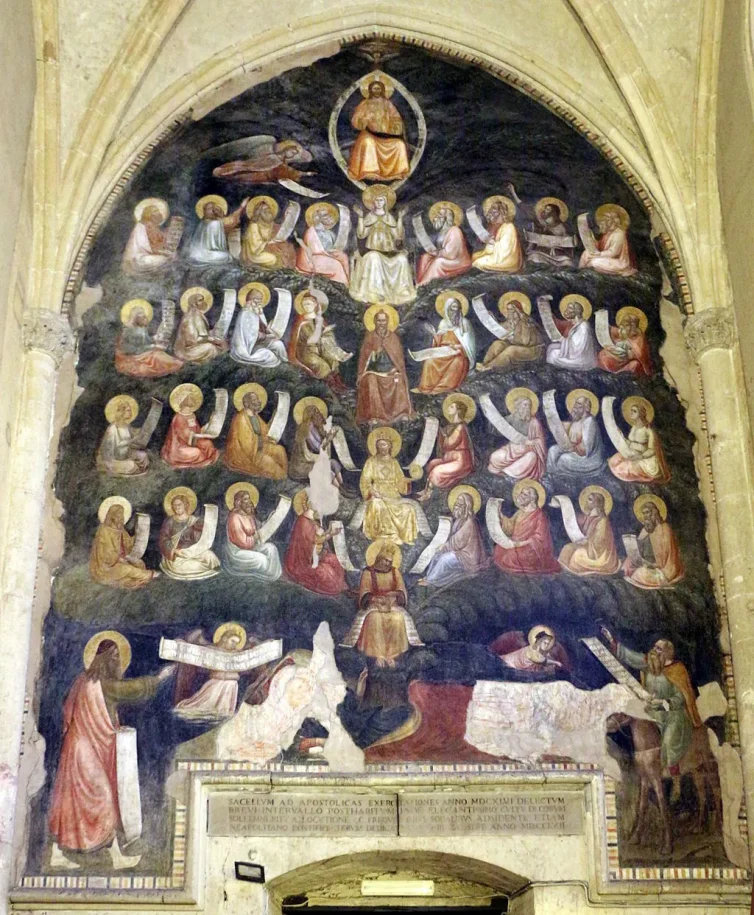The Naples Duomo Cathedral and The Chapel of San Gennaro
Table of Contents
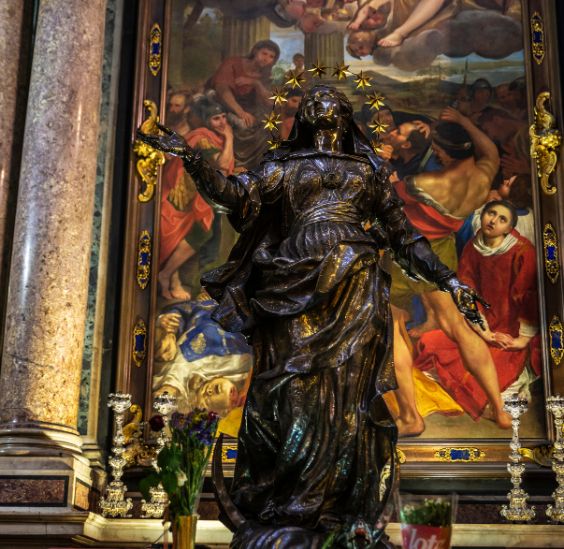
Nestled in the heart of Naples, the Naples Cathedral, or the Duomo di Napoli, stands as a monumental testament to the city’s rich religious and cultural heritage. Known for its breathtaking architecture and the sacred artifacts it houses, this cathedral is not just a place of worship but a beacon of history and artistry that attracts visitors from all around the world.
In this article, we delve into the intriguing history of the cathedral, its architectural brilliance, the mesmerizing art within, and the significance of the Chapel of San Gennaro and the Basilica of Santa Restituta. Whether you’re planning to visit or simply curious about this iconic landmark, join us as we explore the soul of Naples encapsulated within the walls of its grand cathedral.
History of the Cathedral and Its Construction
The Naples Cathedral, known locally as the Duomo di Napoli, serves not just as the city’s religious heart but as a historical emblem that has withstood the test of time. Its origins trace back to the late 13th century, under the reign of Charles I of Anjou, who envisioned a cathedral that would symbolize the spiritual and political ascendancy of Naples. This ambitious project was set upon the remnants of earlier Christian sites, embedding the new structure within a tapestry of ancient faith.
Construction of the cathedral was an endeavor that spanned several centuries, reflecting the evolving architectural and artistic tastes of successive periods. Initially grounded in the French Gothic style, indicative of Charles I’s origins, the cathedral was later embellished with Renaissance and Baroque elements, each addition marking a new chapter in its storied existence. The integration of these styles has bestowed the cathedral with a unique aesthetic, one that captures the dynamic history of Naples itself.
The cathedral’s journey through time was not without adversity. Naples, a city prone to natural calamities, witnessed the cathedral standing resilient against numerous earthquakes. The most notable of these, in the 15th and 18th centuries, necessitated significant reconstruction efforts. These events were pivotal in shaping the cathedral’s physical and spiritual identity, reinforcing its role as a beacon of hope and endurance for the Neapolitan people.
Central to the cathedral’s construction is the story of its patrons and architects, a lineage of devotion and craftsmanship that spans generations. From its Gothic beginnings to the Baroque grandeur that characterizes its current form, the cathedral has been touched by the hands of numerous artisans and workers, each contributing to its magnificence. The interior, a labyrinth of chapels, altars, and artworks, serves as a testament to their skill and piety, encapsulating the essence of Neapolitan artistry.
The construction of the Naples Cathedral is a narrative of faith, resilience, and artistic achievement. It stands as a monument to the enduring spirit of Naples, a city that has, through centuries of change and challenge, maintained a steadfast devotion to its cultural and religious heritage. The cathedral, with its towering facade and sacred interiors, continues to be a focal point of Neapolitan life, welcoming worshippers and visitors alike into its hallowed halls.
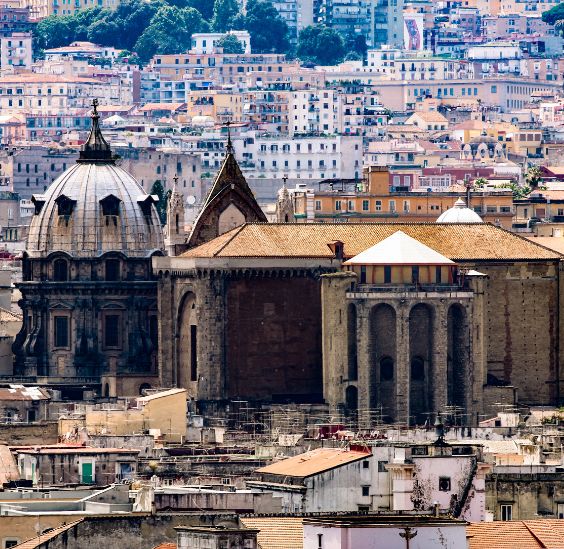
Historical Naples Tour: Origin, Cults & Legends
Embark on a journey through the heart of Naples, a city steeped in tales and traditions that date back to the Greeks. This comprehensive tour offers an immersive exploration of Naples’ most captivating churches, vibrant squares, and historic streets. Wander the ancient city center accompanied by your guide, who will enrich your walk with tales of Naples’ rich cultural heritage. Along the way, indulge in a moment of authentic Neapolitan life with a stop for the city’s famed espresso. Discover the best of Naples effortlessly, without the need to navigate maps and guidebooks. Your guide will provide valuable insights into the city’s past, cultural nuances, and gastronomic delights. Visit the renowned nativity scene artisans on Via San Gregorio Armeno and savor a taste of Naples at a local coffee bar, experiencing the quintessential Neapolitan espresso.
Architectural Style of the Cathedral
The Naples Cathedral, or Duomo di Napoli, is a magnificent showcase of architectural evolution, embodying elements from the Gothic, Renaissance, and Baroque periods. This amalgamation of styles not only reflects the changing tastes and influences over the centuries but also the cathedral’s ability to adapt and grow with the city it serves. The cathedral’s architectural narrative is a testament to Naples’ rich cultural heritage, with each element and addition telling a story of artistic endeavor and religious devotion.
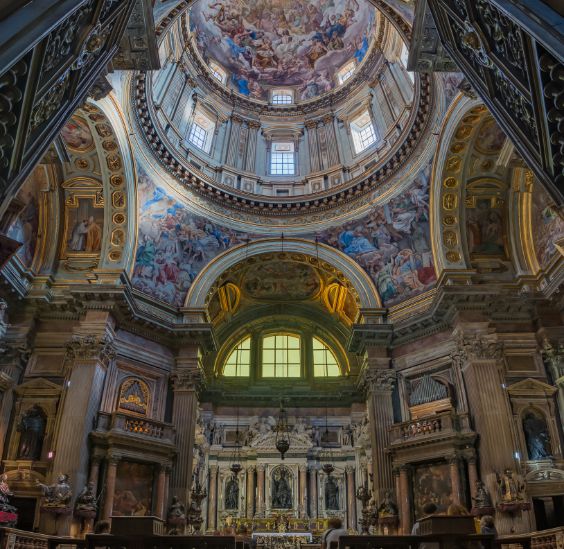
Gothic Beginnings
The initial architectural design of the Naples Cathedral was heavily influenced by the French Gothic style, a nod to the Angevin rulers who initiated its construction. The Gothic architecture is characterized by its pointed arches, ribbed vaults, and flying buttresses, designed to create structures that reach towards the heavens. While the cathedral has undergone numerous modifications, the Gothic influence is still evident in the overall structure and layout. This style was chosen for its ability to convey a sense of divine grandeur and lightness, creating a space that was both awe-inspiring and conducive to worship.
Renaissance and Baroque Transformations
As time progressed, the cathedral embraced the Renaissance and Baroque styles, reflecting the artistic and cultural shifts within Naples. The Renaissance brought a renewed interest in classical antiquity, which influenced the cathedral’s interior design and decoration. This period emphasized harmony, proportion, and balance, leading to the incorporation of classical architectural elements such as columns and pilasters that added a sense of order and grace to the cathedral’s grandeur.
The Baroque period introduced a more dramatic and ornate aesthetic, aiming to evoke emotional engagement and spiritual fervor. The cathedral’s Baroque elements are most evident in its chapels and altars, which feature elaborate decorations, including intricate stucco work, gilded accents, and dynamic sculptures. These additions transformed the cathedral into a visual narrative of religious stories and saintly virtues, designed to captivate and uplift the faithful.
The Facade: A Blend of Styles
The facade of the Naples Cathedral is a striking example of the blend of architectural styles that define the building. Initially designed in the Gothic style, it was later modified with Renaissance and Baroque elements, creating a unique aesthetic that captures the cathedral’s historical and artistic journey. The facade’s intricate stonework, grand entrance, and towering spires draw visitors into a space that bridges the earthly and the divine, serving as a prelude to the beauty and sanctity that lies within.
Interior Majesty
Inside, the cathedral’s nave is flanked by a series of chapels, each a masterpiece of the period it represents. The Gothic structure provides a lofty and luminous space, while Renaissance artistry brings classical elegance to the chapels and altars. The Baroque influence is most palpable in the ornamental richness that adorns the interior, from the lavish use of marble and gold to the dramatic play of light and shadow, enhancing the spiritual ambiance of the cathedral.
The architectural style of the Naples Cathedral is more than just a visual feast; it is a symbolic reflection of the city’s resilience, faith, and artistic heritage. Through its Gothic foundations, Renaissance refinements, and Baroque exuberance, the cathedral stands as a monument to the enduring spirit of Naples, inviting all who enter to experience a piece of the city’s soul.

The Most Beautiful Artistic Works Inside the Cathedral
The Naples Cathedral, with its rich history and diverse architectural styles, houses an equally impressive collection of artistic treasures. These works, ranging from medieval frescoes to Renaissance sculptures and Baroque paintings, not only adorn the cathedral but also contribute to its spiritual and cultural significance. Each piece tells a part of the story of Naples, its faith, and its artistic heritage, making the cathedral a living museum of religious art.
Medieval Mosaics and Frescoes
Among the earliest artistic works within the cathedral are the mosaics and frescoes that date back to the medieval period. The Baptistry of San Giovanni in Fonte, part of the cathedral complex, is renowned for its Byzantine mosaics. These vibrant artworks depict scenes from the life of John the Baptist and are among the oldest and most significant mosaics in Western Europe, offering a glimpse into the religious and artistic sensibilities of the early Christian era.
Renaissance Sculptures and Paintings
The Renaissance period brought a revival of classical forms and a new emphasis on humanism, which is reflected in the sculptures and paintings from this era found within the cathedral. Notable Renaissance artworks include the serene and dignified statues of saints and biblical figures, which stand in contrast to the Gothic architecture. These sculptures, with their attention to human anatomy and emotion, embody the Renaissance’s rediscovery of classical ideals.
The cathedral also houses several Renaissance paintings that are noteworthy for their use of perspective, color, and light. These works often depict biblical scenes or the lives of saints, blending religious themes with the era’s characteristic attention to detail and realism. The art from this period not only serves as decoration but also as a medium for theological and philosophical expression, inviting contemplation and devotion.
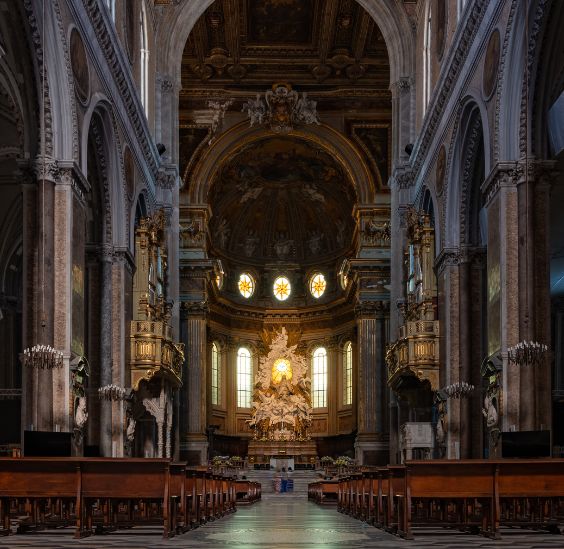
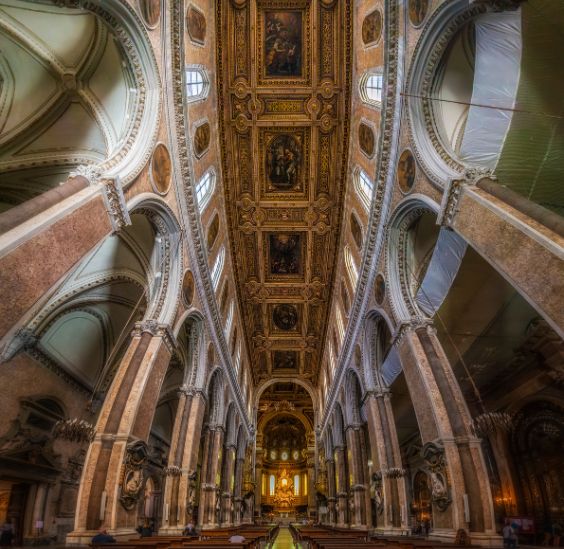
Baroque Opulence
The Baroque period introduced a dramatic, ornate style to the cathedral’s interior, aimed at inspiring awe and emotional engagement. This is evident in the lavish use of gold, intricate stucco work, and dynamic sculptures that adorn the chapels and altars. One of the most striking examples of Baroque artistry in the cathedral is the Chapel of San Gennaro, which houses frescoes and sculptures that narrate the life and miracles of Naples’ patron saint in vivid detail.
The Baroque artworks within the cathedral are characterized by their emotional intensity, dramatic use of light and shadow, and elaborate decorative elements. These pieces are designed to evoke a sense of divine presence and to engage the viewer in a deeply spiritual experience. The opulence and dynamism of Baroque art reflect the Counter-Reformation’s emphasis on the sensory aspects of worship, making the cathedral a space where art and faith intertwine.
The Integration of Art and Faith
The artistic works inside the Naples Cathedral are not merely decorative; they are integral to the cathedral’s function as a place of worship and pilgrimage. Through these artworks, the cathedral communicates the stories, teachings, and mysteries of the Christian faith, making them accessible and engaging to believers and visitors alike. The beauty and diversity of the art within the cathedral reflect the complexity of human experience and the depth of spiritual inquiry, inviting all who enter to explore the rich tapestry of Neapolitan religious and cultural identity.
The Naples Cathedral, through its architectural magnificence and artistic richness, stands as a testament to the enduring power of faith and the transformative potential of art. The artworks within its walls offer a journey through time, from the early Christian era to the Baroque period, each piece contributing to the cathedral’s sacred atmosphere and its historical and cultural legacy.
The Chapel of San Gennaro
The Chapel of San Gennaro, more formally known as the Royal Chapel of the Treasure of San Gennaro, is not only the spiritual epicenter of the Naples Cathedral but also a focal point of Neapolitan faith and identity. Dedicated to Saint Januarius (San Gennaro), the patron saint of Naples, this chapel is a masterpiece of Baroque art and architecture, embodying the deep religious devotion and artistic heritage of the city. Its significance stretches beyond its architectural beauty, serving as a testament to the enduring faith of the Neapolitan people and their centuries-old veneration of San Gennaro.
Architectural and Artistic Marvel
Constructed in the 17th century, the chapel stands as a prime example of Baroque architecture, characterized by its lavish decorations, intricate frescoes, and dynamic sculptures. The interior of the chapel is adorned with works by some of the most prominent artists of the Baroque period, including Domenichino, Lanfranco, and Ribera. Their artworks contribute to the chapel’s atmosphere of divine reverence and artistic splendor, depicting scenes from the life of San Gennaro and illustrating his miracles with vivid imagery and emotional depth.
The centerpiece of the chapel is the altar, where the relics of San Gennaro, including his skull and the ampoules containing his blood, are kept. These relics are not only of profound religious significance but also central to one of Naples’ most important and beloved traditions—the Miracle of the Blood.
The Miracle of the Blood
The Miracle of the Blood occurs three times a year, when the dried blood of San Gennaro is said to liquefy in a ceremony attended by thousands of faithful and spectators. This phenomenon is deeply embedded in the cultural and spiritual life of Naples, symbolizing the saint’s ongoing protection and benevolence towards the city. The anticipation and celebration surrounding the miracle underscore the chapel’s role as a living symbol of faith and community in Naples.

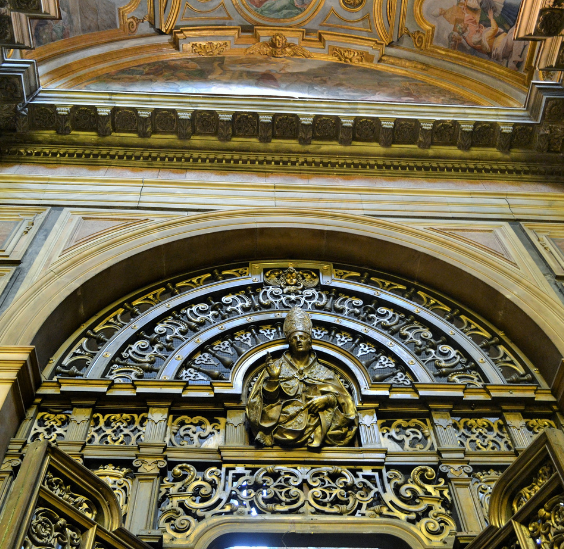
A Symbol of Neapolitan Identity
The Chapel of San Gennaro transcends its religious function, embodying the historical resilience and cultural richness of Naples. It represents a continuity of faith that has survived through centuries of challenges, from natural disasters to social upheavals. The devotion to San Gennaro and the collective participation in the ritual of the blood miracle reinforce a sense of communal identity and solidarity among Neapolitans, making the chapel a focal point of civic pride.
Artistic and Religious Legacy
The chapel also serves as a repository of artistic and religious heritage, housing an impressive collection of artworks, including paintings, sculptures, and precious objects that contribute to the understanding of Naples’ artistic achievements and religious traditions. The art and architecture of the Chapel of San Gennaro offer a window into the Baroque era’s aesthetic sensibilities and the theological themes of the time, providing insight into the complex interplay between art, faith, and identity in Neapolitan culture.
The Chapel of San Gennaro is more than just a component of the Naples Cathedral; it is a beacon of faith, art, and community. Its significance lies not only in its architectural and artistic splendor but also in its embodiment of the spirit and heart of Naples, reflecting the enduring devotion and cultural richness of this vibrant city.
The Basilica of Santa Restituta
Adjacent to the grandeur of the Naples Cathedral lies the Basilica of Santa Restituta, an ancient and venerable church that holds a special place in the heart of Neapolitan Christianity. This basilica, one of the oldest Christian sites in Naples, offers a fascinating journey through time, revealing layers of religious and architectural history that date back to the early Christian period. Its significance extends beyond its age, embodying the continuity of Christian worship and the rich tapestry of Naples’ religious heritage.
Historical Significance
The Basilica of Santa Restituta was originally built in the 4th century, making it one of the earliest Christian structures in the region. According to tradition, it was erected by Constantine the Great, the first Roman emperor to convert to Christianity, over the ruins of a Greek temple. This ancient foundation places the basilica at the crossroads of history, where pagan antiquity gave way to the Christian era, reflecting the transformative period of early Christian history.
Over the centuries, the basilica underwent numerous modifications and restorations, each adding a layer to its historical and architectural narrative. Its integration into the larger cathedral complex in the 13th century further underscored its importance to Naples’ religious and cultural identity, serving as a physical and spiritual link between the city’s past and present.
Architectural Features
Despite the modifications over the years, the Basilica of Santa Restituta retains many of its original architectural features, offering a glimpse into early Christian basilica design. The basilica is characterized by its classical rectangular layout, divided into three naves by a series of ancient columns, which lead to a semi-circular apse. The simplicity and elegance of its design contrast with the Baroque exuberance of the adjacent Chapel of San Gennaro, highlighting the diverse architectural heritage of the cathedral complex.
One of the basilica’s most remarkable features is its ceiling, adorned with frescoes that depict scenes from the Old and New Testaments, blending art and faith in a vivid narrative display. These artworks, along with the ancient mosaics and sculptures housed within the basilica, contribute to its atmosphere of devotion and historical depth.
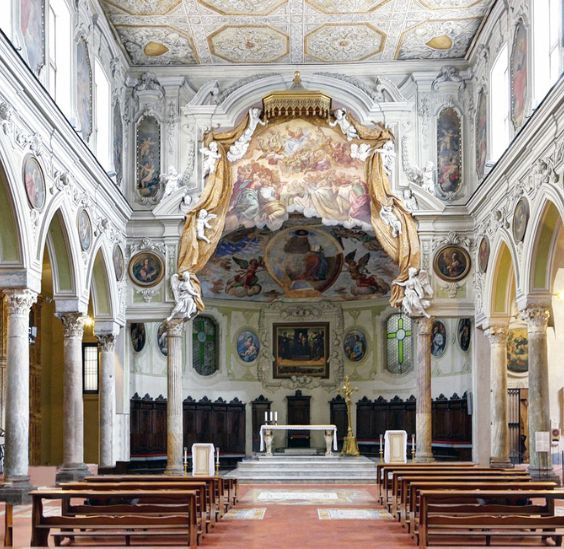
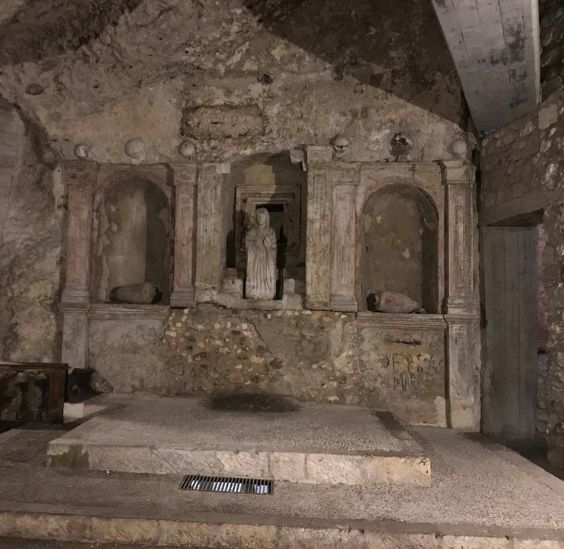
The Archaeological Area
Beneath the basilica lies an archaeological area that offers a unique window into the layers of Naples’ history. Excavations have revealed the remains of a Greek temple and a Roman public building, providing tangible links to the city’s ancient past. This subterranean world, accessible to visitors, enhances the basilica’s significance, offering a tangible connection to the civilizations that have shaped Naples’ cultural landscape.
A Living Monument of Faith
The Basilica of Santa Restituta continues to serve as a place of worship, embodying the enduring legacy of Christian faith in Naples. It stands as a monument to the city’s religious history, from its pagan roots to its Christian present, reflecting the spiritual journey of the Neapolitan community through the ages. The basilica is not just an architectural relic but a living testament to the continuity and evolution of faith in Naples, inviting believers and visitors alike to explore the depths of its sacred heritage.
Mass Times Within the Cathedral
The Naples Cathedral, a beacon of faith and history, continues to serve its primary function as a vibrant place of worship, welcoming both locals and visitors to participate in its religious services.
The cathedral’s schedule of masses reflects the Neapolitan community’s devotion and offers an opportunity for all to experience the spiritual life of this historic church. Attending mass at the cathedral provides a unique insight into the living faith of Naples, allowing participants to engage with the city’s religious traditions in a profoundly personal way.
Regular Mass Schedule
The cathedral holds regular mass services throughout the week, ensuring that both residents and tourists have the opportunity to participate in its liturgical life. Masses are conducted in various chapels within the cathedral, each offering a different setting and atmosphere, from the grandeur of the main nave to the intimacy of the smaller chapels.
- Weekdays: Masses are typically held in the morning and early evening, accommodating those who wish to attend before or after their daily activities.
- Sundays and Holy Days of Obligation: The cathedral offers several masses throughout the day, recognizing the importance of these days in the Christian calendar. The schedule is designed to cater to the diverse needs of the cathedral’s congregation, with services in the morning, midday, and evening.
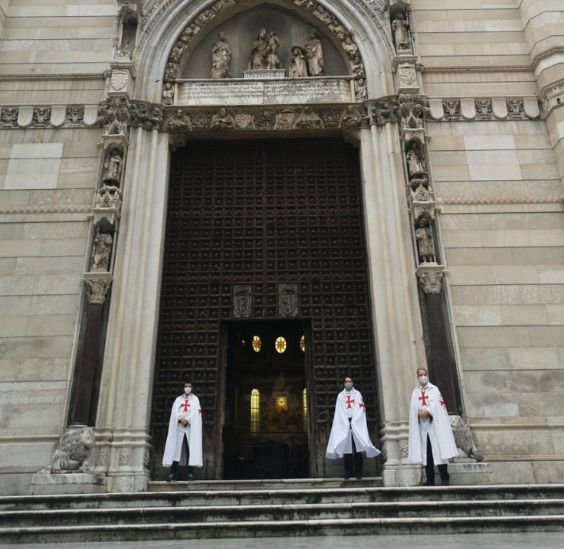

Special Services and Celebrations
In addition to the regular mass schedule, the cathedral hosts special services and celebrations throughout the liturgical year. These include:
- Feast of San Gennaro: Celebrated three times a year, the feast days of San Gennaro, particularly the September celebration, are marked by special masses and the famous blood liquefaction miracle. These days are of significant importance in Naples, attracting large numbers of faithful and visitors.
- Christmas and Easter: These central events in the Christian calendar are celebrated with special vigils, masses, and liturgical services that highlight the cathedral’s role as the spiritual heart of Naples.
Attending Mass at the Cathedral
Visitors wishing to attend mass at the Naples Cathedral are encouraged to check the current schedule, which can be found on the cathedral’s official website or by contacting the cathedral directly. While attending mass, visitors are reminded to respect the solemnity of the service and the cathedral’s guidelines for dress and conduct.
The Experience of Worship
Participating in mass at the Naples Cathedral offers more than just a religious service; it provides a connection to the centuries-old tradition of worship in this historic site. The experience of celebrating mass in such a venerable setting, surrounded by the beauty of sacred art and architecture, is a profound reminder of the continuity of faith and community in Naples.


